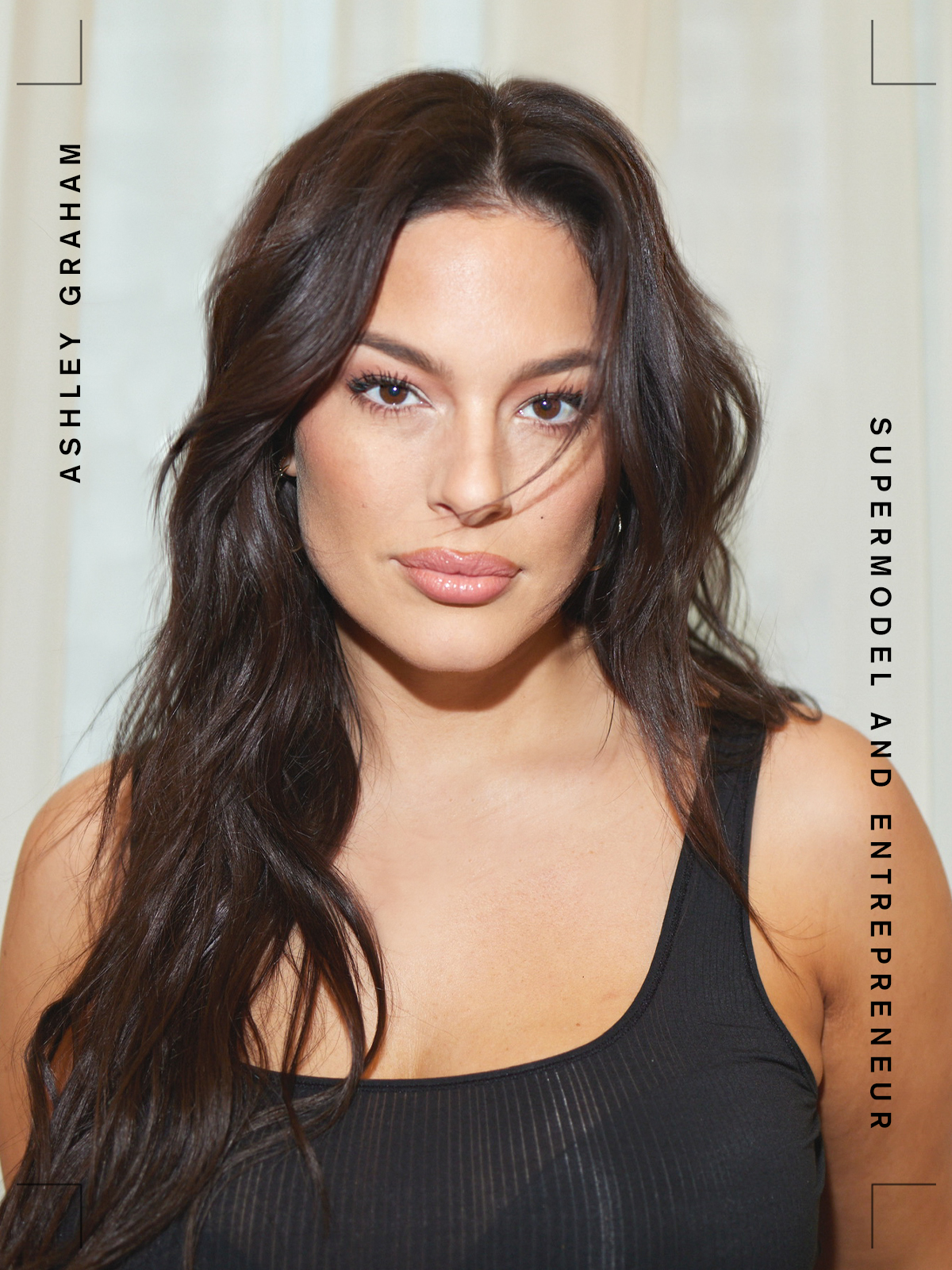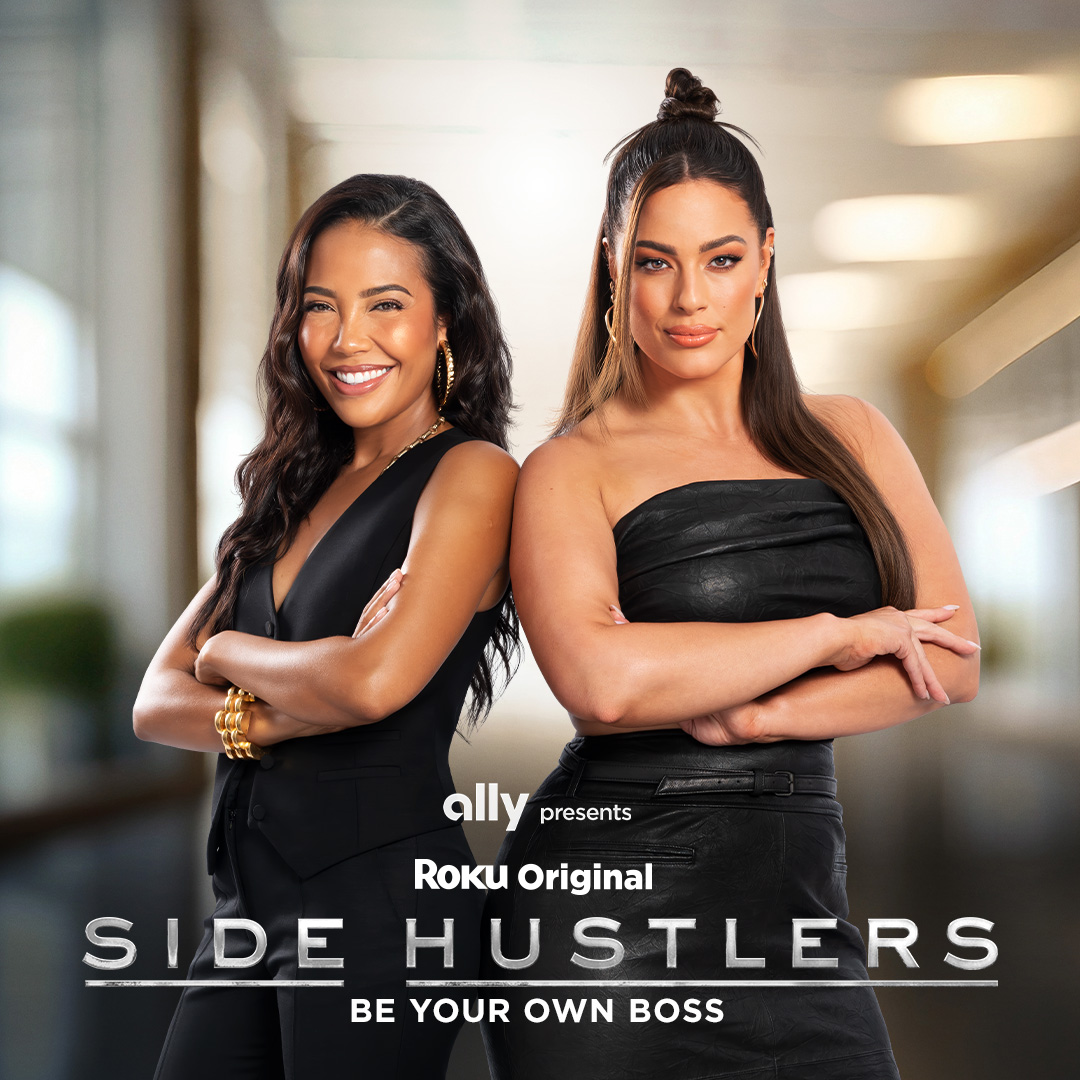How Ashley Graham Went From Supermodel to Entrepreneur

Welcome to our podcast, Who What Wear With Hillary Kerr. Think of it as your direct line to the designers, stylists, beauty experts, editors, and tastemakers who are shaping the fashion-and-beauty world. Subscribe to Who What Wear With Hillary Kerr on Apple Podcasts and Spotify.
Ashley Graham really has the model résumé.
Graham is a supermodel, entrepreneur, and investor who has broken down barriers in the fashion industry.
From being the first size-14 model to being featured on the cover of Sports Illustrated Swimsuit to being named one of Time's 100 Most Influential People in the World, Graham’s list of accolades continues to grow.
For her latest project, Graham is taking her experiences working in fashion and as an entrepreneur and investor to the next level with the Roku docuseries Side Hustlers.
In the series, Graham and Emma Grede, Co-Founder and CEO of Good American, work with female entrepreneurs trying to turn their side hustles into multimillion-dollar businesses.
For the latest episode of Who What Wear With Hillary Kerr, Graham sits down with Who What Wear Editor in Chief Kat Collings to share how she went from working as a model to investing in companies to how she got involved with Side Hustlers and more.
For excerpts from their conversation, scroll below.
I'm excited to dive into all things about your new wonderful show, Side Hustlers. Before we dive into all that, let's talk about your journey and your story. Let's start with the beginning of your modeling career and where you saw yourself going in the industry.
Where it started really for me was at home. My mom came from farmers and she lived on a farm and worked on a farm. She had a lot of hard-working ethics instilled in her, which she gave me and my sisters. Nothing in my home was about appearance. It was about how hard you can work and how strong physically you are.
On the flip side, my dad was an entrepreneur and he always was wheeling and dealing and on the go trying to create new businesses and we moved around a lot as kids.
When I was 12 years old, we had just moved to Nebraska from Texas and a modeling scout found me and asked me if I wanted to model. I had no idea that that would be the beginning of what I have become today. I'm 36-years-old. That was when I was 12.
A lot of people don't get the privilege of being able to start their career at such a young age. I really didn't understand what a career was. I didn't know anything about the fashion industry. I had no idea that I was considered what was labeled “plus size” at the time. I knew I was bigger than my friends, but I didn't get it.
That began an interesting road of self-discovery, making lots of mistakes, and having to figure out what this kind of nasty world of fitting in, trying to be the best, trying to make a dime really was.
When I was 17 years old, I moved to New York to give myself the chance to make it as a successful model. At the time, being a successful model was really being able to pay your rent, hop in a cab when you wanted, and being able to feed yourself.
I did it because if I wasn't going to be able to do it, my mom and dad said I had to move back to Nebraska and go to college.
I had that hustle and that grind from my parents. I was not an academic. ADD and dyslexia were a big issue for me growing up. I knew that if I had to go back to Nebraska, I was going to feel like a failure and I did not want to fail.
Two thousand and ten was not only the year that I got married but also [was when I was] in a commercial for Lane Bryant that put me on the map. It gave me a voice. It didn't give me a name. It gave me a voice.
I was the plus-size lingerie model and everybody pinpointed me into this "sexy" category and the "body" category. That is when I realized, “Oh, this is a business” and one of the first times I understood what capitalizing on it looked like and what that meant as a model.

One thing I love about the show is that it’s set up like a competition, but unlike a normal competition, you don't have a cap on the number of winners or the ways that you can win. If you have a great idea, put in the work, and make things happen, you have a chance to gain something. Can you share more about developing the show's structure to align with that message?
We get these amazing hustlers who have pitched us their incredible ideas. Some of them were not fleshed out ideas. Therefore, Emma [Grede] and I were like, “We're not investing in an idea. We want to invest in a business.”
It was really nice to be able to get to know the business founder right away, because a lot of time when you're investing, it's not even necessarily just in the product. You're investing in this person behind it.
You want to make sure that they're willing to take constructive criticism. That they're going to be a partner with you, that they're going to be able to shift when asked. That was something that I really needed to see. A lot of questions that were asked in the pitches where these women were willing to give and take.
What you see next, honestly, is Emma [Grede] and I picking. We each picked three hustlers that we each wanted to mentor and really be their cheerleader.
We got to look under the hood of each one of these businesses and give them our POV. Also, just some of these women already had everything they needed.
Either they just needed a little bit of capital or they just truly needed somebody to push them. And they needed somebody to let them know, “This is a great idea. Keep going.”
What you see through the season is that and then the last episode, each of the hustlers comes back and pitches to Emma [Grede] and I and we choose if we're going to invest in them or not.

You seem like someone who's always asking questions and learning. I know you impart a lot of wisdom to the contestants that come on the show. I'm curious about what you might have learned from some of them through the process.
What I've realized is that there's no one track. Nobody has a written formula for you, for your business, for your product to get to the top.
I knew that because I have broken down so many doors and have done things my own way, with my own career in the fashion industry.
It still is such a nice reminder to know that whatever path you're on and whatever it is that you're doing, it's right because you're doing it and to be open to the idea of taking a hard left or hard right.
Knowing that because you said yes and you decided to do it, that was the right way. I feel like each of the hustlers actually shows us that.
That how they got to where they were, just to sit right there in the pitch seat and have that one-on-one moment with us, everybody's was so different and so compelling that it just goes to show that you can't follow a model.
You can take people's advice and you can ask questions, but at the end of the day, it really is how hard are you going to work. Are you willing to put this thing in front of everything else?
This interview has been edited and condensed for clarity. Next, check out our interview with Mara Roszak.